When we talk about the next generation of computing platforms, "demand" is more important than "representation."
This is a sketch of the Nautilus submarine ship in the science fiction "Two Thousand Miles Under the Sea." Of course, people in 1869 must have thought that the Nautilus was a science fiction. Until 85 years later, the world's first nuclear-powered submarine was launched in the United States. PS It is also called the Nautilus.
Why do sci-fi always lead the times to innovate? Because novelists don't have to set limits on the details of "how to achieve technology" or "products can be profitable", the only thing they can follow is "demand." The instinct for the world buried deep in people's hearts is the driving force and future of human development.
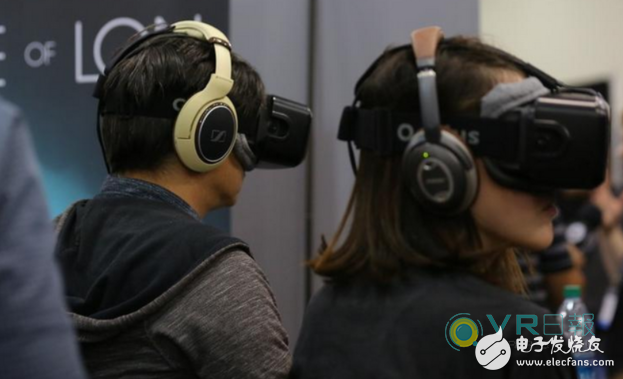
In 2016, sci-fi VR/AR finally had consumer products. Then immediately met with countless pessimistic remarks: 1) The foreign media published a report questioning the slow progress of Magic Leap's productization; the domestic media immediately interpreted it as “technical fraud†and “PPT companyâ€. 2) Sony PS VR went on the market for only a month, which took 49% of the high-end market; Venturebeat said that sales results were disappointing.

When we talk about the next generation of computing platforms, "demand" is more important than "representation." However, sci-fi to the singer, make it crazy. The phenomenon level is slightly unsatisfactory, and then the "black box theory" has been questioned. I forgot to forget how difficult it is to innovate.
This article is slightly longer and the order of the narrative is as follows
(i) Data: Sony holds 49% of the high-end market, but not enough to dispel pessimism;
( ii) various “representations†lead to people not having confidence in VR;
( iii) What is our true “demand†for the next generation of computing platforms?
Disputes over Sony sales data

In the 2016 high-end VR headset market, Sony PS VR sales were 740,000 units, htc vive 450,000 units, and Oculus Rift 355,000 units.
——SuperData latest forecast data
Looking at the numbers alone, the sales competition is very different. Extremely such as The InformaTIon even called it a "killing victory." Sony isn't just outselling them, it's not exactly earlying, it's not an early lead, it's a definiTIve slaughtering.
But not everyone thinks Sony won. Venturebeat expressed disappointment. SuperData said that Sony has dragged down the industry, and the VR market will be the “big loser†in the gaming industry during the Christmas season in 2016.
There are two direct factors that cause controversy:
SuperData's previous forecast said that Sony PS VR sales reached 2.6 million. Now shrinking by 3/4, the expected peak of Black Friday sales did not appear. No wonder disappointment.
The VR concept has been hyped for many years and the public has been eager to verify. This year, the three giants HTC, Oculus, and Sony launched the product together. Research institutions were optimistic, but now they are forced to cut down on multiple product expectations. It is inevitable that people are worried that they will decline again and again, and that more market share is not enough to dispel the pessimism brought about by the market becoming smaller.
VR those disturbing signs
Of course, downgrading Sony and industry sales expectations is just a trigger for public sentiment. The root cause is that people have no confidence in VR. After all, all kinds of "images" are worrying:
1. Low-priced products sell better
The cheap PS VR won HTC Vine and Oculus Rift, but the cheaper Gear VR won everyone. This product, which does not provide a full VR experience, is expected to sell 2.3 million units.

VR Experience / Technology, HTC Vine and Oculus Rift > Sony PS VR > Gear VR. But the sales volume is ranked in the opposite direction. The data shows that sales volume is negatively correlated with product experience and positively correlated with price.
This is a disturbing thing.
A disruptive product usually has two paths: "new market-style subversion" and "low-end subversion." The public believes that VR/AR is not only a disruptive product, but also a new generation computing platform. In other words, the initial trajectory should have been "new market-style subversion."
Harvard professor Christensen in the "Innovator's Dilemma" that "subversive" means: (1) to meet a market that could not be served before, that is, "new market-style subversion"; (2) or, outside the existing products To provide a simpler, cheaper, and more convenient option, "low-end subversion." - "What does subversion mean?"
The development of the current computing platform (smartphone) confirms this theory:

In 2007, Apple introduced the first generation of iPhone, the era of smartphones.
(above) In the early days, high-end machines such as Apple and Blackberry dominated the market, eroding the market share of traditional mobile phones and completing the “new market-style subversionâ€.
(Below) With the popularity of the concept, various Android-based mobile phones appear (Android average selling price is 1/3 of Apple), which meets the needs of the low-end market. Finally, “low-end subversion†products account for more than 80% of the market.
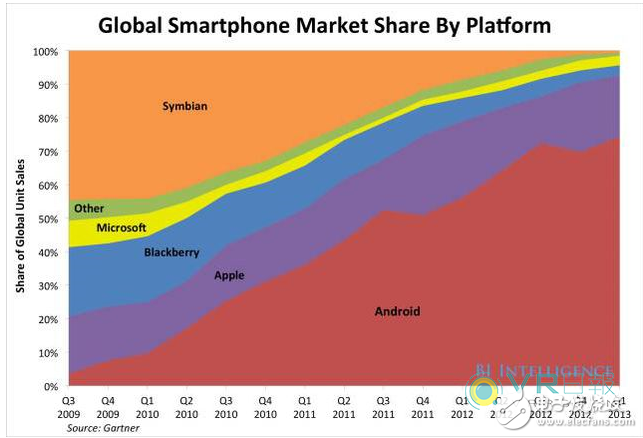
Those who adopt new products first often do not list prices as the first factor. Selling 1 million iPhones in 5 days is not cheap, and the 8GB version costs $599. However, in the early VR market, prices were key, and a significant number of early adopters were reluctant to pay a premium for a better experience.
At this time, people throw a reasonable explanation: they bought the concept of "VR", not the VR experience. So it's easy to think of VR as a gimmick, not a sexy disruptive product. For such consumers, the heart does not agree, but to follow the trend, cheap products is undoubtedly a good choice.
2. Insufficient use cases

This is IBM's "smart" mobile phone Simon launched in 1992. At that time, the Internet was not popular. Its functions were: touch screen and send faxes. Send a fax? Hehe...
After 24 years, the child can also smell the wrong. Why don't multinational companies know? In fact, giving Simon a use case, the idea is correct, and there is no good use case.
The Importance of Use Cases: In Ben Thompson's view, building new product categories requires not only technical support, low prices, but also satisfactory use cases and ecosystems. The latter two factors are especially important.
All smartphones, Google Glass, and first-generation Apple Watch before the iPhone failed because there were no clear, proven, and really needed use cases. - "Snap will become Apple's opponent"
At the first iPhone conference in 2007, all the use cases in Jobs PPT were clear and proven real needs. So, despite the myriad of smartphones that appeared between 1992 and 2007, it was not until the birth of the iPhone that the era of smartphones began.
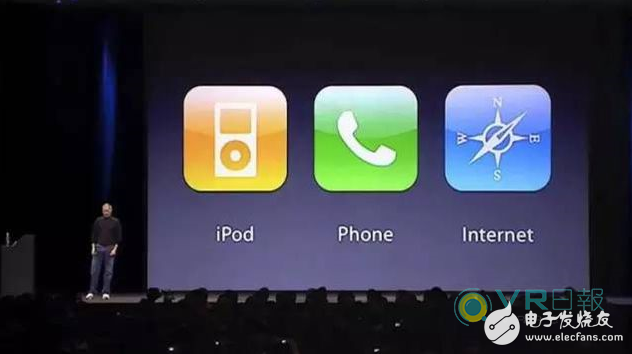
What is the use case for VR? The intuitive experience at this stage is: game accessories.
This use case can support sales. Although HTC Vine and Oculus Rift devices are better than PS VR, everyone is still optimistic about PS VR. Because its gaming platform is PS4. According to IDC statistics, 30% of PS4 are core players (more than 15 hours per week). Since the PS4 has 40 million users, as an accessory to it, PS VR has 12 million potential customers.
However, it is difficult to support people's confidence in VR. Otherwise, why should people talk about the things in the bag? When did Sony take away 12 million sales?
Under this logic, even if Sony's sales reach 2.6 million expectations, there will still be people who feel pessimistic. The shipment of PS VR is a topic that is awkward for the industry. Bad sales, hit the industry. Big sale, prove that VR is limited to games, far from the next generation computing platform.
The obvious evidence is that although the interpretation of Sony is different, people agree that this is an early victory, and the shadow of future winners does not appear at all. People worry that gamers buy game accessories, not VR platforms.
3. Against the trend of portability
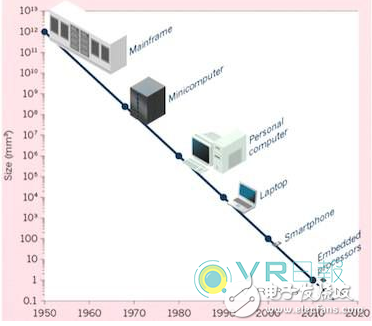
From large computers, home PCs, laptops, to smartphones, computing devices are getting smaller and smaller. People always assume that there is inertia in history, so the conclusion is that the next generation computing platform will be more portable.
There is no need to distinguish between right and wrong in this view of inertia history. It is close to human instinct. It has rarely been found that this is a view that cannot be falsified or confirmed. For example, Moore's Law before failure.
The important thing is the impact. Therefore, we only need to examine, after people regard the inference as a fact, how do you view the current VR?
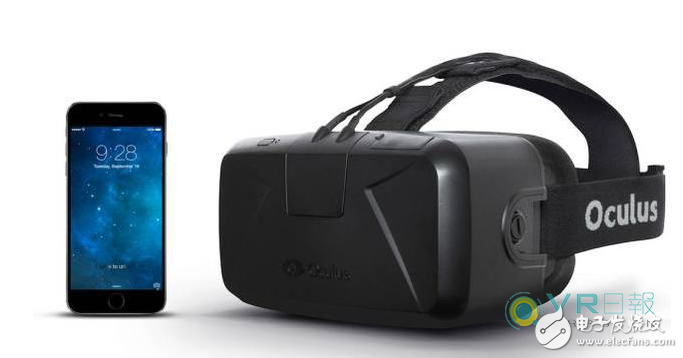
The size is determined. In addition, HTC Vine and Oculus Rift must be connected to a PC for use, and the portability is worse than the one shown in the figure.
4. Sinking virtual games are scary
Goldman Sachs predicts that games account for one-third of the VR/AR application market in 2025. While Goldman Sachs agrees that VR/AR is the next generation of “universal†computing platforms, games are still the biggest use case after 10 years.

People's desire to break through time and space limits does not mean that they want to indulge in the virtual world. Even if it is a pleasing game.
Listening to contradictions at first. In fact, there is a hidden dark line in the history of mankind: the desire and fear of being out of the real world.
In the teachings of many ancient religions, the real world suffers a lot. The believers should leave the body and go to the world of bliss such as the West Heaven and Heaven to gain longevity and happiness. With the emergence of philosophy of science and the release of the Matrix, people are beginning to fear that there is no body, no life in the real world, just a piece of code from Matrix.
It is difficult for us to truly understand the real world (material world). Deeply known as Kant, it has to admit that human beings can only understand "the material itself" (Kant's term, the meaning is that the object itself is the object we can recognize, but not the material entity), and we can never understand the physical entity itself, between matter and spirit. There is an insurmountable gap.
Ignorance leads to uncertainty. In the face of VR/AR, people are sometimes carnival and sometimes frustrated. Although the performance is different, it is actually two things.
This also makes VR/AR always in a whirlpool. This argument sometimes happens at different times of the same person. In the face of difficulties, people immediately jumped out and said, "This is impossible to achieve!"
When we are talking about calculations
YJVFT series mine explosion-proof and intrinsically safe high-voltage vfd motor is a highly integrated product of motor and variable frequency integrated machine. The inverter motor is applicable to belt conveyors, transfer machines, scraper conveyors, emulsion pumping stations and other coal mines that match the motor and the size of the connection. The integral drive systems can realize the device's heavy-duty soft start, dynamic speed control and other functions.
VFD Motor, Inverter Motor, Integral Drive Systems, VFD Motor Combo, VFD For 3 Phase Motor, VFD Motor Controller
FGI SCIENCE AND TECHNOLOGY CO., LTD , https://www.fgi-tech.com